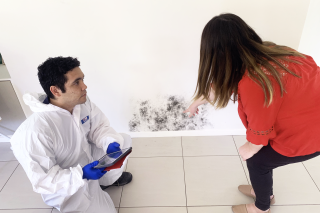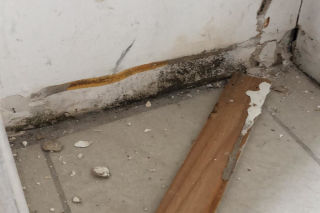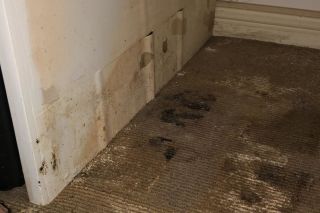How Does Household Mould Affect Your Health?
Mould can grow and thrive anywhere. You can see them on toys, books, clothes and walls. Before discussing the health repercussions that can be caused by mould, it is more fitting to get to know it first.

What is Mould
Mould is fungi that belong to a certain group of organisms like yeasts and mushrooms. For them to grow and thrive, moisture and food source like organic matter, dirt, or dust are necessary.
Mould can come in white, green, grey, or black colours. They also often look like a smudge or stain and may smell musty. They can be found anywhere. Whether it’s outdoors or indoors, they can grow and multiply.
Mould and your health
There have been unverified reports claiming that black mould can cause severe medical conditions like respiratory diseases and cancer. Though mould can pose a threat to one’s health, there have been no convincing researches to verify this. Yes, they can pose a substantial health risk, but not yet to the point of these diseases reaching the level of cancer.
Another clarification is there is no such thing as black mould. Generally speaking, there are many moulds that are black, but it’s not right to categorize them as black moulds as if they belong to one class altogether. When people speak of black moulds, they might be referring to the mould type known as Stachybotrys chartarum or Stachybotrys atra. Despite Stachybotrys atra’s dark colour, there is again no scientific backing to prove that exposure to this mould type is more hazardous compared to exposure to other mould types.
Some people may be sensitive to mould spores compared to others, and this sensitivity can result in respiratory symptoms after inhaling spores. In larger quantities, even those who are not spore-sensitive might also suffer from adverse health conditions. It is therefore essential that you remove any mould growth and also be more proactive in preventing them from growing back.
Mycotoxins
Toxic moulds are known to release mycotoxins, the poisonous substances from fungi. chartarum are said to cause their serious health problems. Mycotoxicosis or mould poisoning can include the following symptoms:
- Nosebleeding
- Memory loss
- Headaches
- Mood swings
- Pains and aches
- Irritations and allergies
Aside from mould poisoning, exposure to mould can cause allergies and irritations. Generally speaking, people with allergies are more sensitive to moulds than others. Contact with these moulds can lead to certain symptoms like the following:
- Blocked or runny nose
- Wheezing
- Sinusitis
- Sore throat
- Skin rashes
- Dry cough
- Red, watery eyes
If the mould allergy is severe, the allergic person may experience shortness of breath. For people with pre-existing lung conditions, their lung problems or asthma may be worsened by exposure to mould. In 2012, a study was conducted and it was revealed that young children and infants who are exposed to home mould are more susceptible to developing asthma when they reach the age of 7. The said researched studied 36 mould types in almost 300 households.
Infections
If you have a healthy immune system, exposure to moulds may not cause health problems. However, if you belong to those who have a weaker immune system, you might struggle with fungal infections. This is especially true for people who are under cancer treatment, transplant, or those suffering from uncontrolled HIV.
Toxic effects
Toxic moulds are not the only mould type that can release mycotoxins. In fact, all kinds of moulds are capable of releasing these substances. The good news is the presence of moulds does not always mean the presence of these toxins. Mycotoxicosis usually results from eating mouldy food. This is not something you get from inhaling the fungal spores in the outdoors or at home. The studies conducted on this matter revealed that touching or inhaling moulds do not cause mycotoxicosis.
Pulmonary hemorrhage
In the early 90s, numerous children from Cleveland developed bleeding in their lungs and one of them died. Later on, the said conditioned was identified as pulmonary hemorrhage. The preliminary research revealed that one of the main causes of such condition was mould exposure, specifically the mycotoxins from Stachybotrys chartarum. Though the US Centers for Disease Control and Prevention (CDC) later on refuted the findings, many still believed that even if mould exposure did not cause it, it was one of the contributing factors leading to the disease.
Summary
The issue of whether or not moulds can lead to severe health conditions like lung problems or cancer may not be answered right now, but one thing holds true -- moulds can cause health problems. Long-term exposure to these moulds, especially at home, can cause one to be unhealthy.
The risk is exceptionally high for infants, young children, elderly, people with asthma or allergies, and those with weaker immune systems. Aside from the respiratory threats, these people are also at risk of contracting a fungal infection.
If you or your loved one is suspected of having a mould allergy, it is best to speak to your doctor immediately. Your doctor can help diagnose this condition based on your symptoms and your family and medical histories. Tests like skin pricking will mostly be conducted to see your body’s reactions to common allergens. Your doctor might also suggest doing a blood test to see how your immune system response to moulds and also check if you have other mould allergies.
In the case of someone suspected with a systemic fungal infection, your doctor might also need to run blood tests and other further tests to fully diagnose the existence of such condition.
If you are concerned about mould in your house, please be sure to consider mould testing which is a service we can offer. We can supply the kit in the mail for you to take the samples yourself, or a qualified mould inspection specialist can come out and visit the property. For a comprehensive review of reasons to test for mould, signs of mould, kinds of mould testing and our mould testing services, please read our "Mould Testing Explained" article.



